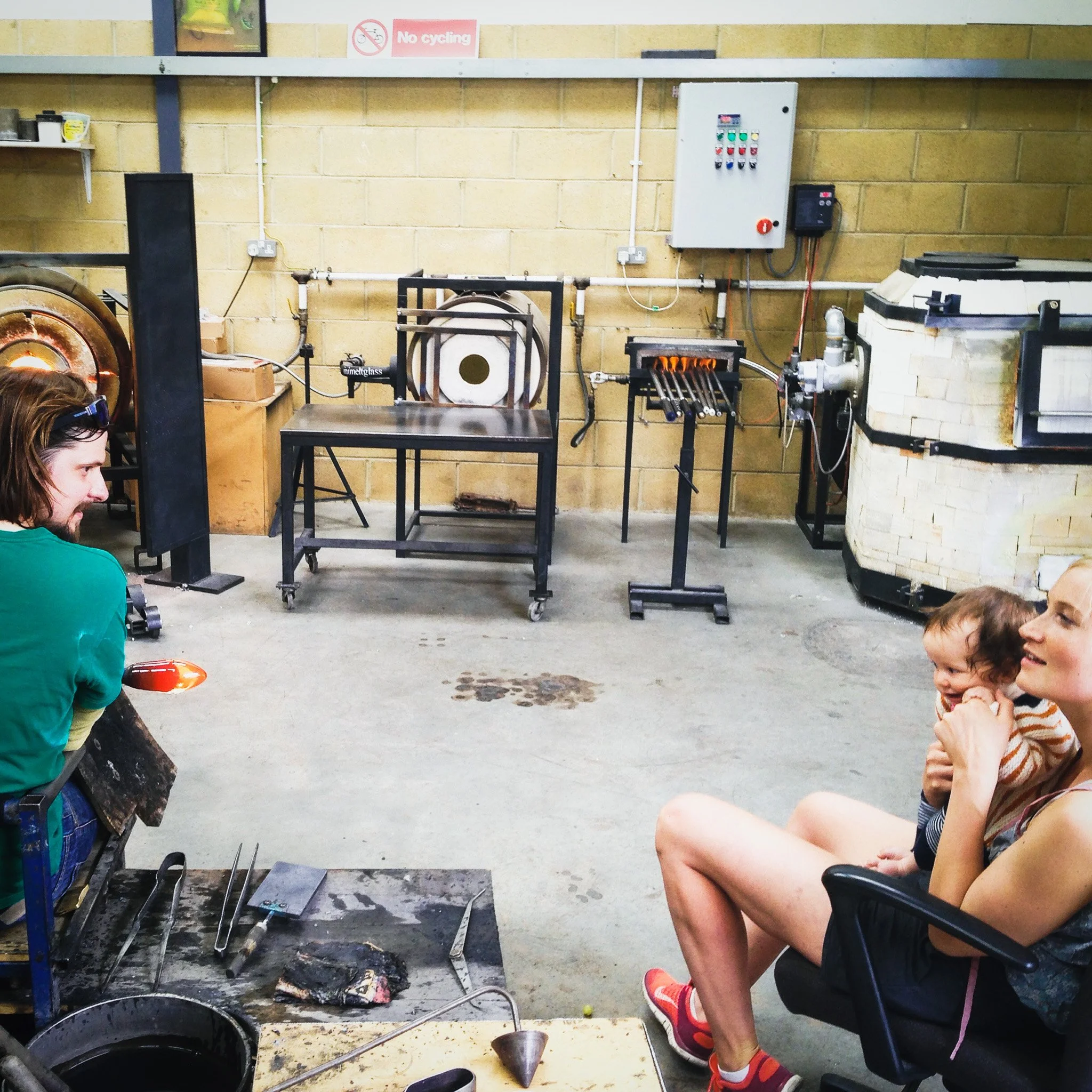Freehand Shaping Glass / Crafting Character Without Moulds
Freehand glassblowing is where the full magic of hot glass comes alive. Without moulds, and guided solely by the hand and eye of the artisan, each piece is shaped in real time—responding to heat, motion, gravity, and skill.
At Utopia & Utility, freehand shaping allows us to create pieces with authentic character, softness of line, and forms that carry the imprint of their making.
Glass blowing in Wiltshire, UK
The Craft of Freehand Glassblowing
In the hotshop, a team of two or more glassblowers works in synchrony. One gathers the molten glass from the furnace using a blowpipe, while the others assist in rotating, blowing, and shaping the mass. This constant movement is critical—it keeps the glass centered and prevents it from slumping under its own weight.
There are no moulds involved. Instead, the form is shaped through a mix of traditional tools—like jacks and paddles—and sheer experience. It’s a practice of timing, intuition, and fluid motion.
Gaffer (shaping) and Helper (blowing )
The Look and Feel of Freehand Glass
What makes freehand-blown pieces unique is their organic variation. Unlike mould-blown glass, which has sharp, repeatable lines, freehand glass often has:
Gently rounded rims
Subtle asymmetries
A sense of movement frozen in form
We often pair these pieces with hand-turned wood or patinated metal, emphasizing contrast between hard and soft, organic and precise.
James, the gaffer, and Utopia designer Pia with her daughter Maya in the hotshop
Why We Value Freehand Techniques
Freehand shaping connects the maker more intimately with the material. There is no hiding behind tools—each decision is visible in the final form. At Utopia & Utility, we see this as a celebration of the human touch, where imperfection becomes identity, and each object tells a quiet story of its making.



